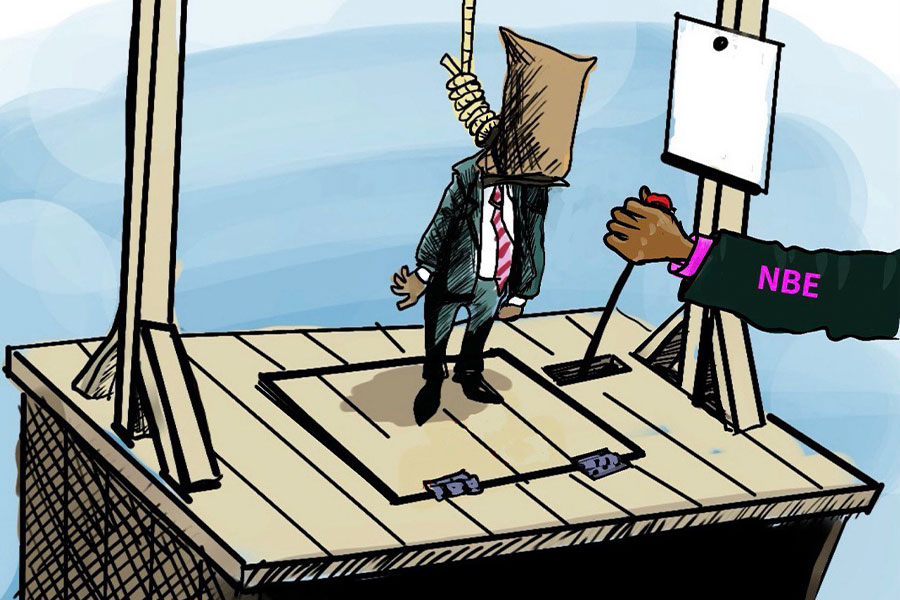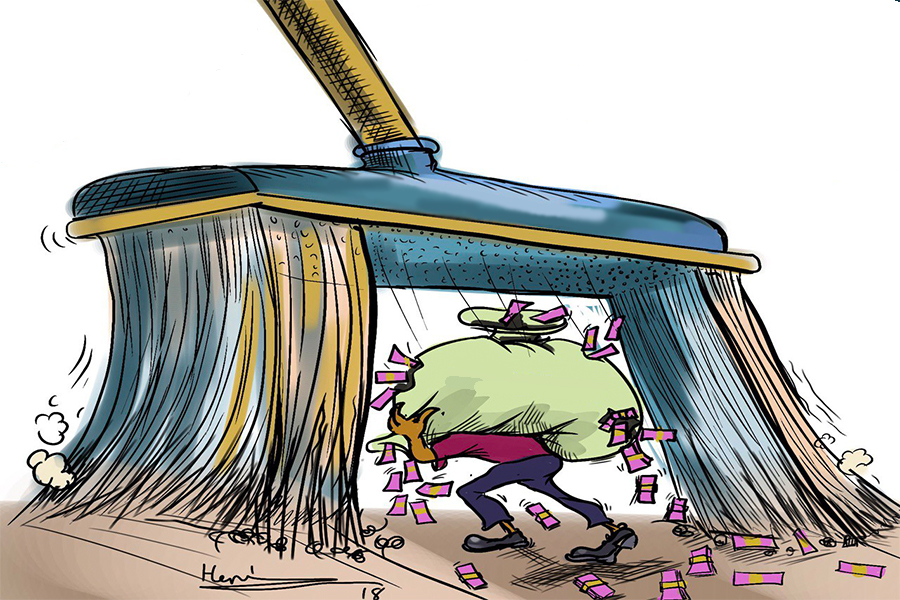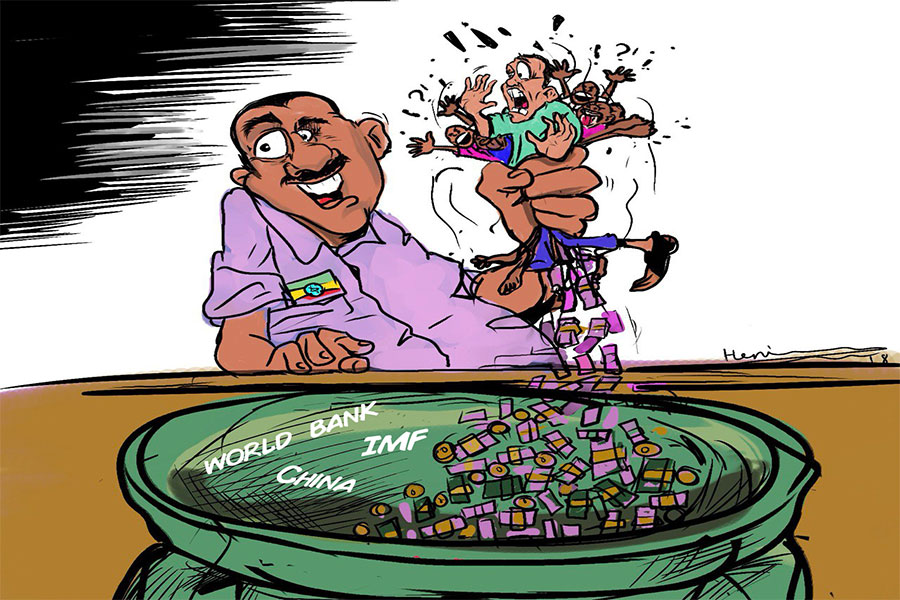
Sep 27 , 2025.
The National Bank of Ethiopia (NBE) entered the foreign exchange market last week with a calibrated display of resolve. On Monday, September 22, 2025, it posted a buying rate of 145.89 Br to a dollar, only a tenth of a Birr below the selling rate. As the week unfolded, the Central Bank subtly pushed the rates down. By Friday, the buying quote had eased to 143.66 Br and the selling rate to 145.1 Br.
Spreads compressed to 0.02pc mid-week before widening again to one percent, still half the market norm. The message was unmistakable. The Central Bank is not a passive observer in this "floating" regime. It is willing to lean in, whether to anchor expectations, test tighter bands, or nudge liquidity in its desired direction.
Bankers have appeared to have taken note, as most of them froze. Hardly anyone followed the Central Bank’s lead, preferring to sit tight until the policy position, with the change of guard at the Central Bank, where Eyob Tekalegn (PhD) replaced Mamo Mihretu, became clearer.
Throughout the week, the official forex market traded in a narrow, almost choreographed corridor. Buying quotes remained above 141 Br to the dollar; selling rates were almost universally two Birr higher. The forex movement was too low. For five straight days, prices barely twitched, giving banks neither room nor incentive to truly discover rates on their own.
However, two breaks in that stillness offered telling insights.
Mid-week, the Central Bank trimmed its reference rate, signalling downward pressure. Meanwhile, Amhara Bank surged ahead, leapfrogging Oromia Bank to post the market’s highest quotes. The combination revealed the outlines of a managed, not free, market, with enough space left for occasional skirmishes among banks.
The rest of the field remained largely inert. Abay, Awash, Bank of Abyssinia (BoA), Bunna, and Nib nudged quotes by mere tenths of a Birr. A larger bloc, including Ahadu, Oromia, and Zemen, held their ground for all five days. The state-owned Commercial Bank of Ethiopia (CBE), the market’s lodestar, kept its buying rate at 138.74 Br and its selling rate at 141.52 Br, providing both a floor and a dependable benchmark around which others clustered.
Spreads told a similar tale. Since the float, the two-percent margin has become a quiet rule of the road. Nine in 10 banks stuck to it last week. One exception was Co-operative Bank of Oromia (Coop Bank), which briefly dipped to a 1.78pc spread before reverting, possibly testing the waters or responding to tactical pressures. More intriguing was the Central Bank’s own behaviour. Its mid-week compression of the spread, followed by a partial widening, seemed not accidental but deliberate, and a signal, not a slip.
That policy probe reached a crescendo Friday, when Amhara Bank broke from the pack with a buying rate of 145 Br and a selling rate of 147.9 Br, displacing Oromia Bank and sitting 3.49 Br above the market’s average buying rate. In a week where most banks traded inside a 141 Br and 142 Br buying corridor and a 143 Br and 145 Br selling range, Amhara Bank’s rates were an outlier, a bold play for travel and remittance flows.
Despite these flashes of competition, the market remains tightly choreographed. The average buying rate was near 141.5 Br and the selling average around 143.5 Br, with fluctuations measured in hundredths of a Birr. The extremes where the CBE posted the week’s lowest rates of 138.74 Br buying and 141.52 Br selling, while Amhara’s quotes set the ceiling, told the full story.
This tight band is no accident. It unveiled a market architecture that, despite the float, remains under close watch. Regulatory guidance, risk constraints, and rates at the parallel market still shape banks' behaviour. The rule of thumb is evidently clear by now. Banks have to keep the spread at two percent, stay close to the Central Bank’s weighted average, and avoid actions that might stress liquidity.
CBE’s static quotes reinforce this discipline. Its immobility functions as a market stabiliser. Refusing to chase rates reduces volatility and dampens the incentives for undercutting. CBE serves as a bulwark against disorderly pricing.
However, the Central Bank’s mid-week intervention did not appear to be a simple technical adjustment. It could be a strategic move, dragging the market lower without forcing commercial banks to lead. Narrowing the spread removed arbitrage opportunities and speculative inventory play. By the end of the week, with the spread widened again but the rate level held down, the policy goal seemed to be achieved.
Market watchers could draw three key conclusions that the float is not a plunge into volatility but a slow glide under supervision; banks like Amhara Bank may push rates when the reward justifies the risk, but most remain cautious; and, more interventions are likely whenever the Brewed Buck strays from the policy corridor. Central Bank officials seem committed to a controlled depreciation path, with visible markers and occasional adjustments to shape expectations.
Commercial banks, meanwhile, will play along, stepping out only when demand surges, then retreating when the risks outweigh the rewards.
The forex currency regime is neither entirely free nor firmly fixed. It is something in between where it is supervised, signalled, and intentionally steady. Last week offered a case study in how that hybrid system of tight corridors, a public anchor in CBE, an engaged referee at the Central Bank, and enough elbow room for banks works. Unless macroeconomic fundamentals shift dramatically, the Brewed Buck's near-term trajectory appears locked into a familiar rhythm of deliberate and measured drift, marked by calibrated calm.
PUBLISHED ON
Sep 27,2025 [ VOL
26 , NO
1326]

Photo Gallery | 180476 Views | May 06,2019

Photo Gallery | 170674 Views | Apr 26,2019

Photo Gallery | 161734 Views | Oct 06,2021

My Opinion | 137287 Views | Aug 14,2021

Nov 1 , 2025
The National Bank of Ethiopia (NBE) issued a statement two weeks ago that appeared to...

Oct 25 , 2025
The regulatory machinery is on overdrive. In only two years, no fewer than 35 new pro...

Oct 18 , 2025
The political establishment, notably the ruling party and its top brass, has become p...

Oct 11 , 2025
Ladislas Farago, a roving Associated Press (AP) correspondent, arrived in Ethiopia in...